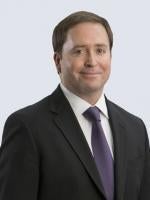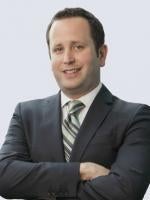In Teva Pharm. USA, Inc. v. Sandoz, Inc., No. 13-854, (U.S., Jan. 20, 2015), the U.S. Supreme Court held that an “appellate court must apply a ‘clear error,’ not de novo, standard of review” to the evidentiary underpinnings of a district court’s claim construction determination. While the ultimate question of claim construction will remain a legal question subject to de novo review, the Supreme Court held that the Federal Circuit must find clear error to overturn a district court’s resolution of an underlying factual dispute.
The Court noted that the “clear command” of Federal Rule of Civil Procedure 52(a)(6) provides that an appellate court may not set aside findings of fact unless they are clearly erroneous. The Court also found that nothing in Markman v. Westview Instru., Inc., 517 U.S. 370 (1996), created an exception to Rule 52, in that the focus of Markman was principally a Seventh Amendment question as to whether claim construction was for a judge or jury. Markman held that the ultimate issue of claim construction should be treated as an issue of law, but also recognized that claim construction will have “evidentiary underpinnings” that courts may have to resolve as factual disputes. The Court was not persuaded that a clearly erroneous standard for factual disputes and de novo standard for the ultimate decision will be hard to manage or will interfere with uniform decision making. The Court also found that there is a practical advantage for district courts to resolve factual disputes. “A district court judge who has presided over, and listened to, the entirety of a proceeding has a comparatively greater opportunity to gain that familiarity than an appeals court judge who must read a written transcript or perhaps just those portions to which the parties have referred.”
In addressing how this rule of claim construction should be applied, the Court recognized that where the district court reviews only evidence intrinsic to the patent, the result is solely a determination of law, subject to de novo review. The Court noted, however, that sometimes the district court needs to look beyond the patent’s intrinsic evidence and consult extrinsic evidence to understand the background science or the meaning of a term in the relevant art during the relevant time period. The Court found that requires subsidiary factual findings about that extrinsic evidence, explaining that “[t]hese are the ’evidentiary underpinnings’ of claim construction that we discussed in Markman, and this subsidiary fact finding must be reviewed for clear error on appeal.” Even if such factual findings may be dispositive of the ultimate legal question on the proper meaning of the term, that does not render the subsidiary fact question a legal question. Nevertheless, the Court was clear that “the ultimate question of construction will remain a legal question.” Therefore, “[f]or example, if a district court resolves a dispute between experts and makes a factual finding that, in general, a certain term of art had a particular meaning to a person of ordinary skill in the art at the time of the invention, the district court must then conduct a legal analysis: whether a skilled artisan would ascribe that same meaning to that term in the context of the specific patent claim under review.”
The Supreme Court vacated the Federal Circuit’s judgment and remanded the case.






 />i
/>i
